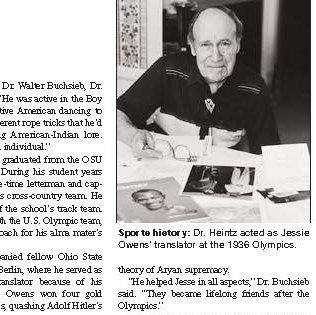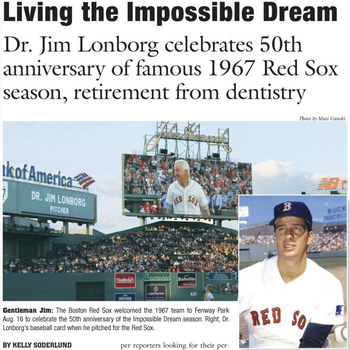<h1 style="text-align: center; bottom-margin: 2rem">Play ball! Dental Professionals On and Off the Field</h1>
Team players on and off the field, many dentists have also excelled in the sports arena. Playing, refereeing, and making history is par for the course for these athletic dentists.
Always team players on and off the field, many dentists have also excelled in the sports arena. This page contains items from the ADA Archive and ADA member associations that profile oral health professionals' participation in a variety of professional sports including baseball, hockey, and football. A special section explores dentistry's unique impact on golf, showcasing the invention of the golf tee and the origins of a legendary player.
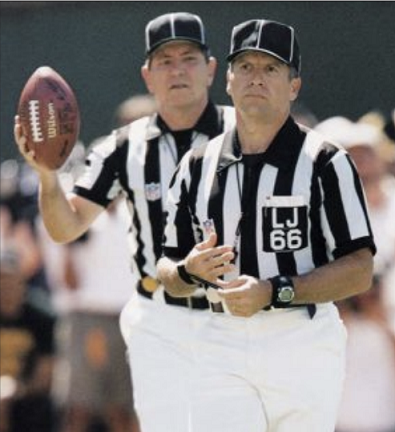
<br>
<br>
<br>
<h2>“Dentists must be meticulous and professional in treating patients... Officiating is the same way, not a big-scope thing but minding the small details.”</h2>
<h3 style="margin-bottom: -1rem; text-align: right"><i>Dr. David Warden</i></h3>
<br>
<br>
<br>
<br>
<br>
<p style="font-size: .8em; margin-bottom: -1rem; text-align: left"><i>Dentists and NFL referees Dr. Walt Anderson (right) and Dr. David Warden (left).</i></p>
<p style="font-size: .8em; margin-bottom: -1rem; text-align: left"><i>Dr. Anderson was the first dentist to officiate in the NFL.</i></p>
<br>
<br>
<h2 style="margin-left: 1em; margin-bottom: -.5rem">ADA Materials</h2>
<p style="margin-bottom: -1rem"><b><a href="https://adanews.ada.org/ada-news/2022/march/member-dentist-represents-us-in-2022-winter-olympics/"><b>Member dentist represents US in 2022 Winter Olympics</b></a></b></p>
<p>This article from ADA News features Dr. Tara Peterson. Dr. Peterson is a dentist in her home state of Minnesota and was also a member of the US National Curling Team in the 2022 Winter Olympics in Beijing.</p>
<br>
<p style="margin-bottom: -1rem"><b><a href="https://adanews.ada.org/ada-news/2023/september/linda-edgar-dds-to-become-160th-president-of-the-ada/"><b>Linda Edgar, D.D.S., to become 160th president of the ADA</b></a></b></p>
<p>The 160th president of the ADA, Linda Edgar, D.D.S., not only has a long history of marathon and Ironman triathlons but also competed in the very first women's Olympic Marathon Trials.</p>
<br>
<p style="margin-bottom: -1rem"><b><a href="https://www.ada.org/about/press-releases/colorado-dentist-voted-president-elect-by-the-american-dental-association"><b>Colorado Dentist Voted President-Elect by the American Dental Association</b></a></b></p>
<p>The incoming ADA president, Dr. Brett Kessler, is a five-time Ironman triathlete. Although succeeding Dr. Edgar, who is also an Ironwoman, this accomplishment is not a requirement to hold office. Yet.</p>
<br>
<br>
<h2 style="text-align: center; bottom-margin: 2rem">Dentists <i>Drive</i> Golf <i>Fore</i>-ward</h2>
<p>Golf has been a favorite pastime for dentists since nearly the beginning of the profession. Today, golf tournaments and outings are held in conjunction with many dental meetings. Where did this love of golf come from?</p>
<p>At the end of the 19th century, articles begin to appear in dental journals concerning the importance of taking time off from work for the health and wellbeing of the dentist. They stated that prolonged work in the typical dental office of the time, often dim with natural light through windows as the only source of light and smelling of the chemical accoutrements of the profession, could be detrimental to the health of the dentist. Golfing was quickly adopted by dentists to enjoy the benefits of outdoor activity while avoiding unnecessary physical risk.</p>
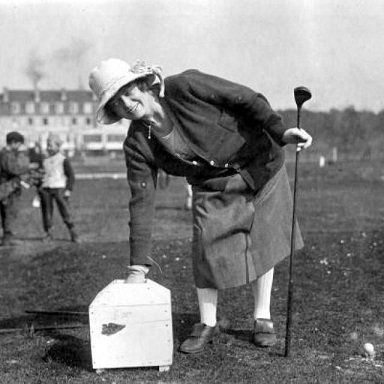
<br>
<br>
<br>
<h3>“I play golf because it makes me more fit… No man’s body or brain is efficient unless it is given recreation…</h3>
<h3>I play golf because it is a most wonderful training for the co-ordination of the brain and muscles. I believe I have done better dentistry since I have played golf.”</h3>
<p style="margin-bottom: -1rem; text-align: right"><i>National Dental Golf Association President Dr. Thomas P. Hinman, 1921</i></p>
<br>
<br>
<br>
<p style="font-size: .8em; margin-bottom: -1rem; text-align: left"><i>A golfer in 1921 reaches into a "tee box" to retrieve a handful of wet sand,</i></p>
<p style="font-size: .8em; margin-bottom: -1rem; text-align: left"><i>which would then be shaped into a tee for the golf ball.</i></p>
<br>
<p>However, not all of the golf experience was completely enjoyable. Prior to the adoption of the wooden tee, golfers generally teed up by making a little mound of moist sand and placing the ball on top of it. The task by all accounts was inconvenient, tedious, messy and impractical as on a windy day the ball was likely to roll off the mound as the golfer made his swing. Also because each mound of sand from which a golfer teed was slightly different in shape and size every drive off the mounds differed in height and length no matter how perfect the swing. This eventually led many to attempt to invent a standard stabilized tee. </p>
<p>Two dentists made major impacts on the sport by each inventing a version of the wooden golf tee - considered one of the most significant contributions to the game of golf since it's modern version was invented in the 16th century.
<br>
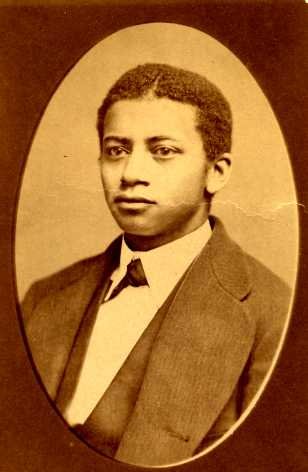
<br>
<h2>Dr. George F. Grant</h2>
<p>The first U.S. patent for a wooden golf tee was awarded to Dr. George F. Grant (pictured left), a dentist, inventor, and avid golfer, in 1899.</p>
<p>Dr. Grant had earned his diploma as the second Black graduate from the Harvard University Dental School. In 1884 he became the first Black professor at Harvard University as an instructor in operative and prosthetic dentistry and therefore the United State’s first Black faculty member in dental education.<b><a href="https://hsdm.harvard.edu/news/trailblazer-inventor-scholar-dr-george-grant-takes-his-place-history">[1.]</a></b></p>
<p>He was a leading authority and pioneer in the treatment of cleft palate and invented and patented a prosthetic device he called the "oblate palate", worn by patients to help them speak and eat.<b><a href="https://hsdm.harvard.edu/news/trailblazer-inventor-scholar-dr-george-grant-takes-his-place-history">[1.]</a></b> In 1899 he extended his inventing prowess to include sports equipment and received the first patent for a wooden golf tee.</p>
<p>His tee did not look like the one in use today: it had a wood base with a flat flexible rubber top. Dr. Grant only had a small amount of the tees manufactured by a local firm to distribute among his friends. He did not publicize or market his tee and so few came to hear about his invention. In 1991, the United States Golf Association recognized Dr. Grant as the originator of the wooden tee.</p>
<br>
<p style="margin-bottom: -1rem; text-align: left"><i>Learn more about Dr. Grant in the ADA YouTube video <a href="https://www.youtube.com/watch?v=cqsLm0vRqoE">Black Trailblazers in Dentistry: Dr. George F. Grant</a>, the USGA Golf Museum article <a href="https://www.usga.org/content/usga/home-page/articles/2018/07/dr--george-grant-and-evolution-of-the-golf-tee-.html">"Dr. George Grant and Evolution of the Golf Tee"</a>, and the PGA article, <a href="https://www.pga.com/archive/how-dr-george-f-grant-went-african-american-dentist-golf-tee-inventor">"How Dr. George F. Grant went from African American dentist to golf tee inventor"</a>, which also gives a brief introduction on Dr. Lowell.</i>
<br>
<br>
<br>
<h2 style="margin-left: 25px">Dr. William Lowell</h2>
<p>Dr. William Lowell separately envisioned a golf tee: one which could be easily carried in the pockets of the golfer and manufactured inexpensively so that it could be used in a “profligate manner” and left in the ground - even suggesting that it be made out of biodegradable material so that it would disintegrate and fertilize the green.</p>
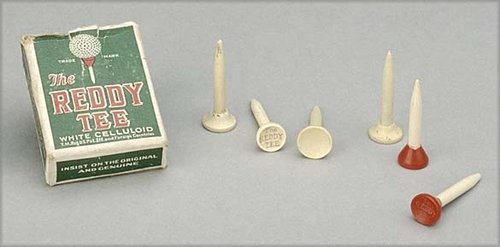
<p>It has been reported that he used his dental tools and materials in working out his designs. One of the materials he experimented with was gutta percha, a type of rubber used in dentistry for fillings and in modeling dentures, however the final design used birch wood. Lowell submitted a patent for his invention in 1922, calling it the Reddy Tee (pictured left) due to its red color designed to contrast with the play field.</p>
<p>The Reddy Tee was a hit, however it was so handy that golfers retrieved the tee after each use and so the biodegradable tee never caught on.</p>
<p>Eventually Lowell quit dentistry to run the company full time, although he continually struggled with getting the licensing fees owed to him for the use of the patent.</p>
<br>
<br>
<h2 style="margin-left: 25px">Cary "Doc" Middlecoff</h2>
<p>Dr. Cary Middlecoff (pictured below) was the most successful professional golfer immediately following World War II. He was also a licensed dentist who practiced at the beginning of his golfing career. Because of this was given the nickname “Doc.”</p>
<p>After receiving his dental degree from the University of Tennessee, College of Dentistry in 1944 Dr. Middlecoff joined the U.S. Army Dental Corps and served as a general dentist for two years mostly filling teeth.</p>
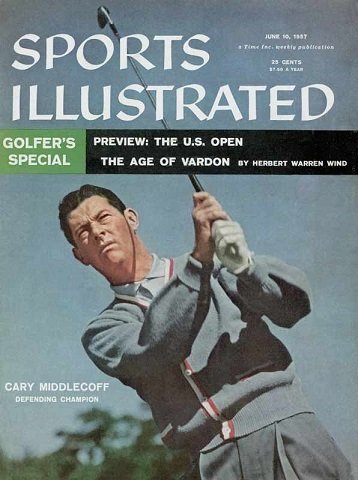
<p>He began golfing at the age of seven when his father taught him the game. Like his father and two of his uncles, he planned to become a dentist, but he was always enamored with golf and won several youth and amateur tournaments while in high school and college.</p>
<p>In 1945, after Doc became the first amateur to win the North and South Open, he joined the Professional Golfing Association Tour. After his first tournament win he promised his father that if he was not successful at golf after two years he would return to dentistry. Dr. Middlecoff claimed his first victory as a pro in 1947 and after that year never practiced dentistry again.</p>
<p>Middlecoff was known for the very slow pace of his play, fiddling over his club selection and planning his shots. Fellow golfers used to joke that he had given up dentistry because no patient could hold his mouth open that long. Despite, or perhaps because of this, Middlecoff is one of only 10 golfers in history to win 40 or more PGA Tour events, winning at least one event every year until he retired in 1961. He led the tour in wins during three seasons, winning 7 times in 1949, 6 in 1951, and 6 in 1955 and also won the 1949 and 1956 U.S. Opens, the 1955 Masters, and was named to three winning U.S. Ryder Cup Teams (1953, 1955, and 1959).</p>
<p>His best year was 1955 when he won the Masters, Western, Miller, and St. Petersburg Opens; the Bing Crosby National; and the Cavalcade of Golf. The highlight of his victory in the Masters was one of the longest putts in history (82 ft.) good for an eagle on the 13th hole of the final round.</p>



